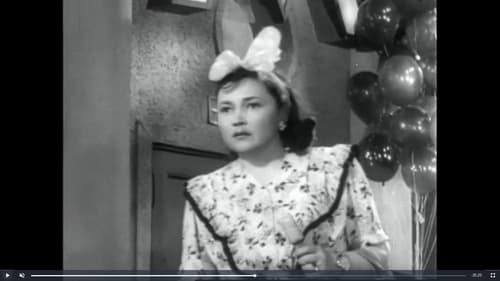Vladimir Egorov
Nascimento : 1878-03-19, village Pokrovskoe, Mtsensk uyezd, Oryol Governorate, Russian Empire [now Mtsensky District, Oryol Oblast, Russia]
Morte : 1960-10-08

Production Designer

Production Design
Primarily a biographical documentary about the military career of Alexander Vasilvich Suvorov, who was Field Marshal of the armies of Catherine the Great and Czar Paul I. After many military successes during the reign of Catherine, General Suvorov broke with her successor, Paul I, the Mad Emperor, over questions regarding army policy. He went into retirement and wrote "The Science of Victory," containing maxims such as "Swiftness of movement accompanies victory," and "the real general is he who defeats the enemy before reaching him." The czar recalled Suvorov to become the leader of the joint armies of Russia and Austria against Napoleon.

Production Design
The film tells about a band of demobilized Red Army men and two civilians who cross a Middle Asian desert. They are forced to do battle with superior forces of Basmachi rebels for the dry draw-well.

Production Design
Film adaptation of The Golovlyov Family ("Господа Головлёвы), a classic novel by Mikhail Saltykov-Shchedrin. In the mid-19th century old-fashioned estate based on serfdom laws and traditions, tough and shrewd Arina Petrovna tries her best to make her realm prosper and even expand – despite unwillingness of her husband and three of her four children to lend helping hands... Ten years on, serfdom abolished, and now Porfiry-Yudishka, the epitome of a corrupt, cruel hypocrite, becomes the heir to the estate. Dullness and horrors of life, spent in destroying everybody around him, finally makes him to slowly realize things went somehow wrong. Half-mad, apparently, he goes to the cemetery to "ask for forgiveness" from his mother Arina Petrovna, and dies somewhere along his way, his frozen corpse found the next day.

Art Direction
Working with children led Barskaya to create superb direct sound and an inspired style of shooting. Don’t look for conventional cinematic syntax here. The film is chaotic in the way that Soviet films still knew how to be, and Langlois couldn’t help but be seduced by its rebellious spirit, its anarchy and love of children, comparable to Vigo’s Zero de conduite.
As well as being a film made with and for children, it offers a complex take on Western society. Pre-Nazi Germany is not named as such but is carefully reconstructed, possibly under advice from Karl Radek, and children offer a playful reflection of class struggle – doubly excluded, as proletarians and as minors. “They play in the same way that they live”, one intertitle says. The interaction between their comical games and the yet more ludicrous ones played by adults is developed on several levels.

Production Design
Directed by Ivan Pyryev.

Art Direction
Soviet film based on Dostoevsky's autobiographical novel of his prison experiences in Tsarist days.

Production Design
Konstantin Eggert both directed and starred as Count Shemet, cursed by his insane mother’s traumatic experience with a bear to have seizures during which he himself becomes a “bear” on the kill. Eggert’s direction of the movie is as odd as the plot. The whole film is unsettling. The titles are too long; there are interminable shots of irrelevant action; the cutting is uneven. The heroine is unsuitably comic, spasmodically jumping around, smearing ink on her face, knocking things over. For some reason the somber, doomed count falls in love with this girl and decides to marry her.

Production Design
A young woman arrives in her school where she must teach for the first time. Her task consists in teaching a class of adults to read and write. All her students are male, ranging from boys to old men, and they are rather rowdy and difficult. All the more as a young hooligan dares write her on a test paper that he loves her. Feeling harassed by the young man, she is defended by other students. But she more or less feels the young bad boy's love is true and when this one is lying on his dying bed, after being stabbed by the other students, she solaces him by kissing him tenderly.

Production Design
A silent short from Imperial Russia.

Art Direction
A corrupt young man somehow keeps his youthful beauty, but a special painting gradually reveals his inner ugliness to all.






